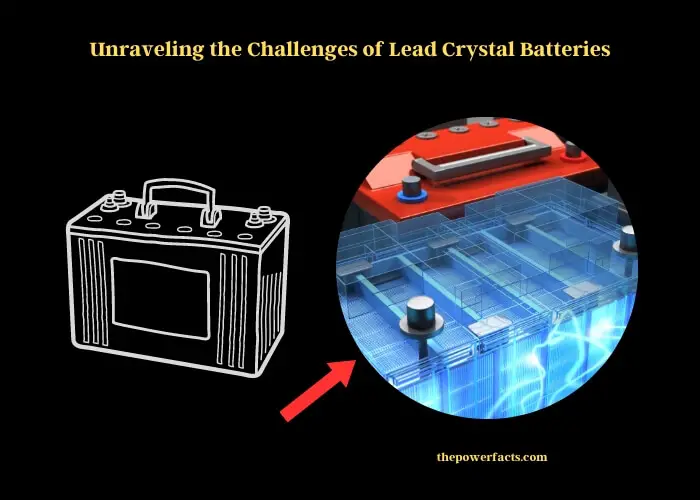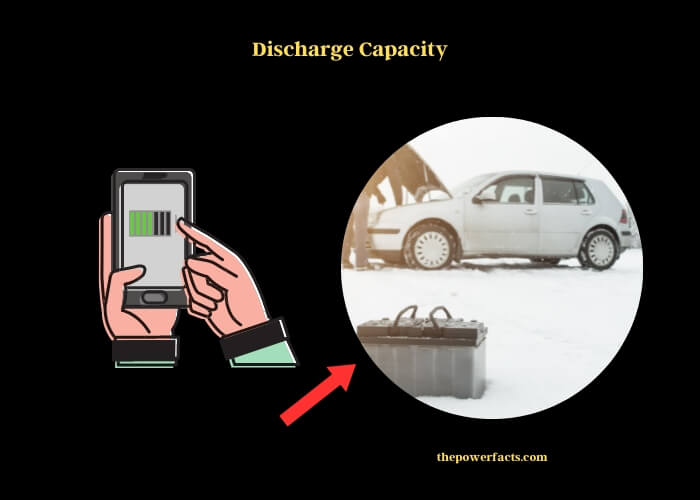Lead crystal batteries, despite their advantages, do face some issues. These problems can include high cost, sensitivity to temperature, and limited discharge capacity.
The lead crystal battery is often compared with other types of batteries, such as lithium and LiFePO4, due to its distinct characteristics and advantages. For instance, lead crystal batteries tend to have a longer lifespan and are more environmentally friendly compared to lithium batteries. On the other hand, lithium batteries are usually lighter and have a higher energy density compared to lead crystal batteries.
Similarly, LiFePO4 batteries also have their own advantages such as higher thermal stability and safety compared to lead crystal batteries. For solar energy storage, lead crystal batteries are a good option as they can withstand deep discharges and have a long cycle life. However, a 12v 100ah lead crystal battery may be bulkier and heavier compared to its lithium or LiFePO4 counterparts.

Despite these advantages, lead crystal batteries have some disadvantages. For example, they are sensitive to high temperatures, which can cause the battery to degrade faster. Additionally, they have a limited discharge capacity which means they may not be suitable for applications that require high power output.
To get more information on this topic, we invite you to read the detailed article below.
Unraveling the Challenges of Lead Crystal Batteries
Lead crystal batteries are becoming increasingly popular due to their environmentally friendly nature and long lifespan. They are often considered a viable option for solar energy storage. However, like any other technology, they come with their own set of challenges. This article aims to shed light on some of the key problems associated with lead crystal batteries and compare them with other commonly used battery types.
Overview of Lead Crystal Batteries
Lead crystal batteries, also known as silicon lead acid batteries, are a type of lead acid battery where the electrolyte is solidified into a gel-like substance using silica. This design helps to prevent leakage and makes the battery more robust. The key characteristics of lead crystal batteries include their ability to withstand deep discharges, long cycle life, and environmental friendliness.
Comparison with Other Battery Types
When compared to other battery types like lithium and LiFePO4, lead crystal batteries have certain advantages and disadvantages. They are known for their long lifespan and are more environmentally friendly than lithium batteries. This is because they do not contain harmful heavy metals and can be recycled more easily. On the other hand, lithium batteries are usually lighter and have a higher energy density compared to lead crystal batteries. LiFePO4 batteries, on the other hand, offer higher thermal stability and safety.
Advantages of Lead Crystal Batteries
Environmental Friendliness
One of the major advantages of lead crystal batteries is their environmental friendliness. Unlike lithium batteries, which contain harmful heavy metals and are difficult to recycle, lead crystal batteries can be recycled more easily. This is because the lead in the batteries can be extracted and reused, while the electrolyte can be neutralized and disposed of safely.
Long Lifespan
Another key advantage of lead crystal batteries is their long lifespan. They can withstand deep discharges and have a long cycle life, which makes them suitable for applications like solar energy storage.
Suitability for Solar Energy Storage
Lead crystal batteries are a good option for solar energy storage because they can withstand deep discharges and have a long cycle life. This means they can be charged and discharged multiple times without significant degradation in performance.
Disadvantages of Lead Crystal Batteries
Despite their advantages, lead crystal batteries also have some drawbacks that need to be considered.
Sensitivity to Temperature
One of the key problems with lead crystal batteries is their sensitivity to temperature. High temperatures can cause the battery to degrade faster, which can reduce its overall lifespan. This is something that needs to be considered when using these batteries in hot climates or in applications where the temperature can vary significantly.
Limited Discharge Capacity
Another issue with lead crystal batteries is their limited discharge capacity. This means they may not be suitable for applications that require high power output. For example, they may not be the best choice for electric vehicles or other high-power applications.
Weight and Bulkiness
Lead crystal batteries are also bulkier and heavier compared to their lithium or LiFePO4 counterparts. This can be a disadvantage in applications where weight and size are critical factors.
Cost Comparison
When it comes to cost, lead crystal batteries are generally more expensive than lithium or LiFePO4 batteries. However, their long lifespan and environmental friendliness can make them a more cost-effective option in the long run.
Lead Crystal Battery vs Lithium Battery
Lithium batteries are usually cheaper than lead crystal batteries. However, they have a shorter lifespan and are not as environmentally friendly. Additionally, lithium batteries have a higher energy density and are lighter, which makes them a better option for some applications.
Lead Crystal Battery vs LiFePO4 Battery
LiFePO4 batteries are also usually cheaper than lead crystal batteries. They have a higher thermal stability and safety compared to lead crystal batteries. However, they also have a shorter lifespan and are not as environmentally friendly.
Cost Comparison Table
| Battery Type | Initial Cost | Lifespan | Environmental Impact |
| Lead Crystal | High | Long | Low |
| Lithium | Medium | Medium | High |
| LiFePO4 | Medium | Medium | Medium |
Temperature Sensitivity
As mentioned earlier, lead crystal batteries are sensitive to temperature. High temperatures can cause the battery to degrade faster, which can reduce its overall lifespan. This is something that needs to be considered when using these batteries in hot climates or in applications where the temperature can vary significantly.
Comparison with Other Battery Types
Lithium and LiFePO4 batteries are also affected by temperature, but to a lesser extent than lead crystal batteries. For example, lithium batteries can operate at higher temperatures without significant degradation in performance. However, they can still be affected by extremely high or low temperatures.
Discharge Capacity
The discharge capacity of a battery is the amount of energy it can deliver in a single discharge cycle. Lead crystal batteries have a limited discharge capacity compared to other battery types.

Comparison with Other Battery Types
Lithium and LiFePO4 batteries generally have a higher discharge capacity compared to lead crystal batteries. This means they can deliver more power in a single discharge cycle, which makes them suitable for high-power applications.
Weight and Size Considerations
Weight and size are important considerations for many applications. Lead crystal batteries are bulkier and heavier compared to their lithium or LiFePO4 counterparts.
Comparison of Weight and Size
Lithium batteries are usually the lightest option, followed by LiFePO4 and then lead crystal batteries. This can be a critical factor for applications like electric vehicles, where weight and size are crucial considerations.
Weight and Size Comparison
| Battery Type | Weight | Size |
| Lead Crystal | High | Large |
| Lithium | Low | Small |
| LiFePO4 | Medium | Medium |
Calculator for Battery Selection
Selecting the right battery for your application is crucial. Here is a simple calculator that can help you make the right choice based on your specific requirements. Just enter your requirements and the calculator will suggest the best battery type for you.
Battery Selection Calculator
Summary
Lead crystal batteries, despite their advantages, do face some challenges. These problems can include high cost, sensitivity to temperature, and limited discharge capacity. While they are more environmentally friendly and have a longer lifespan compared to other battery types, they may not be suitable for all applications.
It is essential to consider all factors, including power requirements, lifespan, environmental impact, and temperature sensitivity, before selecting a battery for your application. For further reading and research on this topic, we suggest consulting other reliable sources of information.
Read more:
- Battle Born Battery Problems: Addressing Common Concerns
- 2014 Chevy Malibu Battery Problems
- Does Corrosion on Car Battery Mean It Needs to Be Replaced?
- How Many Amps is a 18650 Battery?
- Is Battery Management System Needed for Solar System
- Can I Charge Lithium Battery With Mobile Charger?
- When is Car Battery Voltage Too Low (Causes for Low Voltage)
- Do I Need a Memory Saver When Changing Car Battery